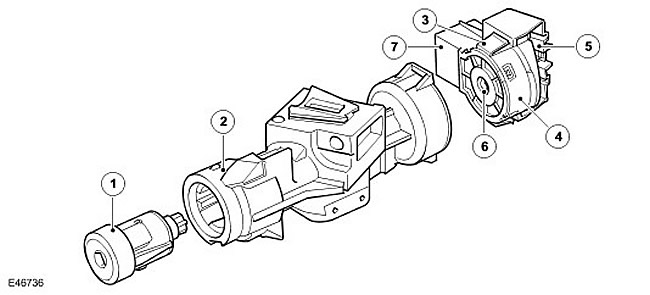
| Item name | Spare part number | Description |
| 1 | - | lock cylinder |
| 2 | - | Steering column lock |
| 3 | - | Locking tab |
| 4 | - | ignition switch |
| 5 | - | Wiring harness connector |
| 6 | - | Drive shaft mount |
| 7 | - | Key lock solenoid |
The ignition switch is located on the left side of the steering column lock assembly. The ignition switch is attached to the cast steering column lock housing with two locking tabs that fit into the corresponding slots in the housing.
The lock has a groove for the drive shaft passing through the steering column lock. This shaft rotates when the ignition key is turned in the ignition lock cylinder. The rotation is transferred to the drum in the ignition lock, which moves two electrical contacts to select the desired ignition position. In each of the three positions of the ignition lock, a spring-loaded ball enters the socket. Due to this, the driver feels when the required key position in the lock has been reached.
On vehicles with an automatic transmission, an electromagnet is installed on the ignition switch. The solenoid, which is controlled by the transfer case control module via one wire, does not allow the key to be removed from the lock if the gear selector lever is not in the PARK position (P). The transfer case receives transmission mode information via the CAN bus from the transmission control module.
When current flows through the electromagnet, it extends the pin, which prevents the key in the ignition lock from turning completely to the '0' position (turned off). This prevents the key from being removed until the transmission selector is in the PARK position.
Comments on this article